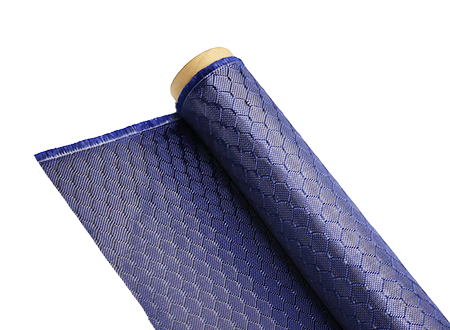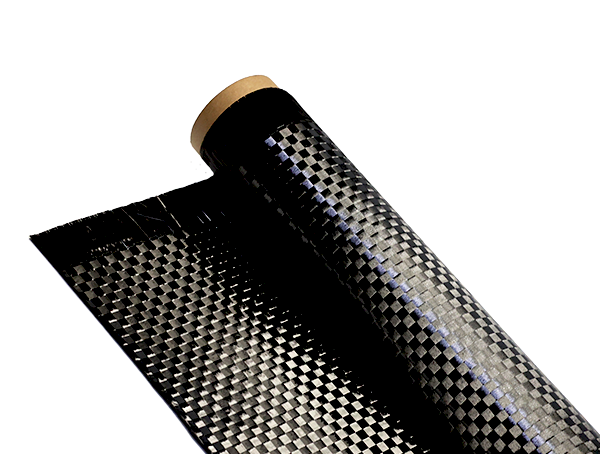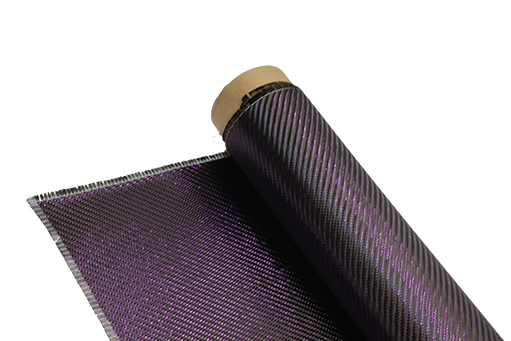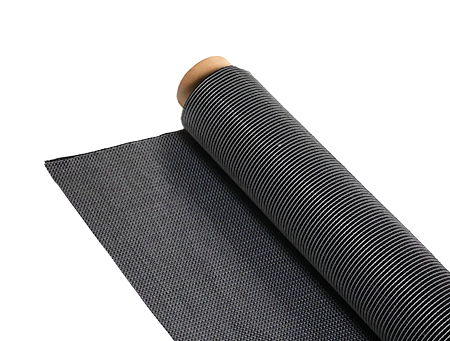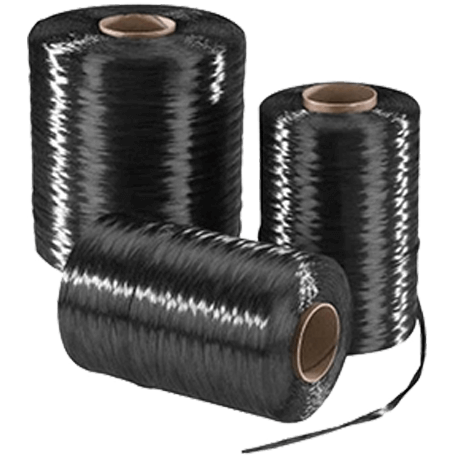¿Qué normas ASTM se aplican a la tela de fibra de carbono para la construcción?
-
Tabla de contenido
- Introducción
- ASTM D7264: Standard Test Method for Flexural Properties of Polymer Matrix Composite Materials
- ASTM D3039: Standard Test Method for Tensile Properties of Polymer Matrix Composite Materials
- ASTM D2584: Standard Test Method for Ignition Loss of Cured Reinforced Resins
- Preguntas y respuestas
“Ensuring Quality and Safety: ASTM Standards for Carbon Fiber Cloth in Construction.”
Introducción
ASTM standards play a crucial role in ensuring the quality, performance, and safety of materials used in construction, including carbon fiber cloth. Carbon fiber cloth is increasingly utilized in various structural applications due to its high strength-to-weight ratio, corrosion resistance, and durability. Several ASTM standards specifically address the testing and evaluation of carbon fiber materials, including ASTM D3039 for tensile properties, ASTM D7264 for flexural properties, and ASTM D7957 for the evaluation of the bond strength of carbon fiber reinforced polymer (CFRP) systems. These standards provide guidelines for manufacturers and engineers to ensure that carbon fiber cloth meets the necessary performance criteria for construction applications, thereby enhancing the reliability and longevity of structures.
ASTM D7264: Standard Test Method for Flexural Properties of Polymer Matrix Composite Materials
ASTM D7264 is a critical standard that addresses the flexural properties of polymer matrix composite materials, including carbon fiber cloth, which is increasingly utilized in construction applications. This standard provides a systematic approach to evaluating the mechanical performance of composite materials under bending loads, which is essential for ensuring the structural integrity and durability of construction components. The significance of ASTM D7264 lies in its ability to offer a reliable framework for testing, thereby enabling manufacturers and engineers to assess the suitability of carbon fiber cloth for various construction applications.
The testing method outlined in ASTM D7264 involves subjecting composite specimens to a controlled bending load until failure occurs. This process allows for the determination of key mechanical properties, such as flexural strength, flexural modulus, and the overall behavior of the material under stress. By adhering to this standard, manufacturers can produce carbon fiber cloth that meets specific performance criteria, ensuring that the material can withstand the demands of construction environments. Furthermore, the results obtained from these tests can be used to compare different composite materials, facilitating informed decision-making when selecting materials for specific applications.
In addition to providing a standardized testing method, ASTM D7264 also emphasizes the importance of specimen preparation and testing conditions. Proper specimen preparation is crucial, as variations in dimensions, surface finish, and fiber orientation can significantly influence the test results. The standard outlines specific guidelines for cutting and conditioning specimens, ensuring consistency and reliability in the testing process. Moreover, it specifies the environmental conditions under which tests should be conducted, such as temperature and humidity, to minimize external factors that could affect the performance of the material.
Transitioning from the testing methodology to the implications of the results, it is essential to recognize how the data derived from ASTM D7264 can impact the design and application of carbon fiber cloth in construction. For instance, understanding the flexural properties of carbon fiber composites allows engineers to predict how these materials will behave when integrated into structural elements, such as beams or panels. This predictive capability is vital for ensuring that the materials can support the intended loads while maintaining safety and performance standards.
Moreover, the insights gained from ASTM D7264 testing can drive innovation in the development of new composite materials. As the construction industry increasingly seeks lightweight and high-strength alternatives to traditional materials, the ability to quantify the performance of carbon fiber cloth becomes paramount. By leveraging the data obtained from flexural tests, researchers and manufacturers can refine their formulations and processing techniques, ultimately leading to enhanced material properties that meet the evolving demands of modern construction.
In conclusion, ASTM D7264 serves as a foundational standard for evaluating the flexural properties of polymer matrix composite materials, including carbon fiber cloth. By providing a rigorous testing methodology and emphasizing the importance of specimen preparation and environmental conditions, this standard ensures that manufacturers can produce reliable and high-performance materials for construction applications. The insights gained from adhering to ASTM D7264 not only facilitate informed material selection but also foster innovation in the development of advanced composite materials, ultimately contributing to the advancement of the construction industry. As the demand for lightweight, durable, and efficient building materials continues to grow, the relevance of ASTM D7264 in guiding the use of carbon fiber cloth in construction will undoubtedly remain significant.
ASTM D3039: Standard Test Method for Tensile Properties of Polymer Matrix Composite Materials

ASTM D3039 is a critical standard that addresses the tensile properties of polymer matrix composite materials, including carbon fiber cloth, which is increasingly utilized in construction applications. This standard provides a comprehensive framework for evaluating the mechanical performance of composite materials, ensuring that they meet the necessary requirements for structural integrity and safety. By establishing a uniform testing methodology, ASTM D3039 facilitates the comparison of different materials and helps manufacturers and engineers make informed decisions regarding material selection.
The significance of tensile testing cannot be overstated, as it directly correlates to the performance of carbon fiber cloth in real-world applications. The tensile properties, including ultimate tensile strength, modulus of elasticity, and elongation at break, are essential indicators of how a material will behave under load. For instance, a high tensile strength indicates that the carbon fiber cloth can withstand significant forces without failing, making it an ideal choice for reinforcing structures. Furthermore, the modulus of elasticity provides insight into the stiffness of the material, which is crucial for applications where rigidity is paramount.
To conduct the tensile test as outlined in ASTM D3039, samples of carbon fiber cloth are prepared according to specific dimensions and conditions. This preparation is vital, as any inconsistencies in sample size or shape can lead to inaccurate results. Once the samples are ready, they are subjected to a controlled tensile load until failure occurs. The data collected during this process is then analyzed to determine the material’s tensile properties. This rigorous testing ensures that the carbon fiber cloth meets the performance criteria necessary for construction applications.
Moreover, the standard emphasizes the importance of environmental conditions during testing. Factors such as temperature and humidity can significantly influence the mechanical properties of composite materials. Therefore, ASTM D3039 stipulates that tests should be conducted under controlled conditions to ensure the reliability and reproducibility of results. This attention to detail not only enhances the credibility of the testing process but also ensures that the materials will perform consistently in various environmental scenarios.
In addition to its role in evaluating tensile properties, ASTM D3039 also serves as a benchmark for quality assurance in the manufacturing of carbon fiber cloth. By adhering to this standard, manufacturers can demonstrate compliance with industry best practices, thereby instilling confidence in their products among engineers and construction professionals. This compliance is particularly important in sectors where safety and performance are non-negotiable, such as in the construction of bridges, buildings, and other critical infrastructure.
Furthermore, the implications of ASTM D3039 extend beyond mere compliance; they also foster innovation within the industry. As manufacturers strive to meet or exceed the standards set forth by ASTM, they are encouraged to explore new materials and technologies that can enhance the performance of carbon fiber cloth. This drive for improvement not only benefits individual companies but also contributes to the overall advancement of composite materials in construction.
In conclusion, ASTM D3039 plays a pivotal role in defining the tensile properties of carbon fiber cloth used in construction. By providing a standardized testing method, it ensures that materials are evaluated consistently and reliably, thereby supporting the integrity and safety of structures. As the demand for high-performance materials continues to grow, adherence to ASTM D3039 will remain essential for manufacturers and engineers alike, fostering a culture of quality and innovation in the construction industry.
ASTM D2584: Standard Test Method for Ignition Loss of Cured Reinforced Resins
ASTM D2584 is a critical standard that addresses the ignition loss of cured reinforced resins, particularly relevant in the context of carbon fiber cloth used in construction applications. This standard provides a systematic approach to evaluating the thermal stability and performance of composite materials, which is essential for ensuring safety and reliability in construction projects. As carbon fiber cloth becomes increasingly popular due to its high strength-to-weight ratio and corrosion resistance, understanding the implications of ASTM D2584 is vital for engineers and architects who incorporate these materials into their designs.
The ignition loss test outlined in ASTM D2584 measures the weight loss of a cured resin composite when subjected to high temperatures. This process is crucial because it helps determine the material’s thermal degradation characteristics, which can significantly impact its performance in real-world applications. For instance, when carbon fiber cloth is used in structural components, it is essential to know how the material behaves under extreme conditions, such as fire or prolonged exposure to high temperatures. By adhering to ASTM D2584, manufacturers and users can ensure that the carbon fiber cloth meets the necessary safety standards and performance criteria.
Moreover, the significance of ignition loss testing extends beyond mere compliance with regulations. It provides valuable insights into the durability and longevity of carbon fiber composites in construction. When a material exhibits a high ignition loss, it may indicate a lower thermal stability, which could lead to premature failure in structural applications. Conversely, a low ignition loss suggests that the material can withstand elevated temperatures without significant degradation, making it a more reliable choice for critical applications. Therefore, understanding the results of ASTM D2584 testing can guide material selection and design decisions, ultimately enhancing the safety and effectiveness of construction projects.
In addition to its role in assessing thermal stability, ASTM D2584 also contributes to the broader understanding of material properties in the context of composite construction. The standard encourages manufacturers to develop high-quality carbon fiber cloth that not only meets performance specifications but also aligns with industry best practices. This focus on quality assurance is essential in a field where the integrity of materials can directly influence the safety of structures. By following ASTM D2584, manufacturers can demonstrate their commitment to producing reliable and durable products, fostering trust among engineers and builders who rely on these materials.
Furthermore, the implications of ASTM D2584 extend to regulatory compliance and market competitiveness. As construction standards evolve and become more stringent, adherence to established testing methods like ASTM D2584 can provide a competitive edge. Companies that prioritize compliance with this standard are better positioned to meet the demands of the market, as they can assure clients of the quality and safety of their carbon fiber products. This not only enhances their reputation but also contributes to the overall advancement of composite materials in construction.
In conclusion, ASTM D2584 serves as a foundational standard for evaluating the ignition loss of cured reinforced resins, particularly in the context of carbon fiber cloth used in construction. By understanding and applying this standard, stakeholders can ensure the thermal stability and reliability of carbon fiber composites, ultimately leading to safer and more effective construction practices. As the industry continues to evolve, the importance of such standards will only grow, reinforcing the need for rigorous testing and quality assurance in the use of advanced materials.
Preguntas y respuestas
1. **Question:** What ASTM standard is commonly referenced for the testing of carbon fiber reinforced polymer (CFRP) materials used in construction?
**Answer:** ASTM D3039/D3039M – Standard Test Method for Tensile Properties of Polymer Matrix Composite Materials.
2. **Question:** Which ASTM standard addresses the fire performance of carbon fiber materials in construction applications?
**Answer:** ASTM E84 – Standard Test Method for Surface Burning Characteristics of Building Materials.
3. **Question:** What ASTM standard is used for the evaluation of the bond strength of carbon fiber reinforced systems in construction?
**Answer:** ASTM D7234 – Standard Test Method for Pull-Off Adhesion Strength of Coatings and Laminates to Substrates.

